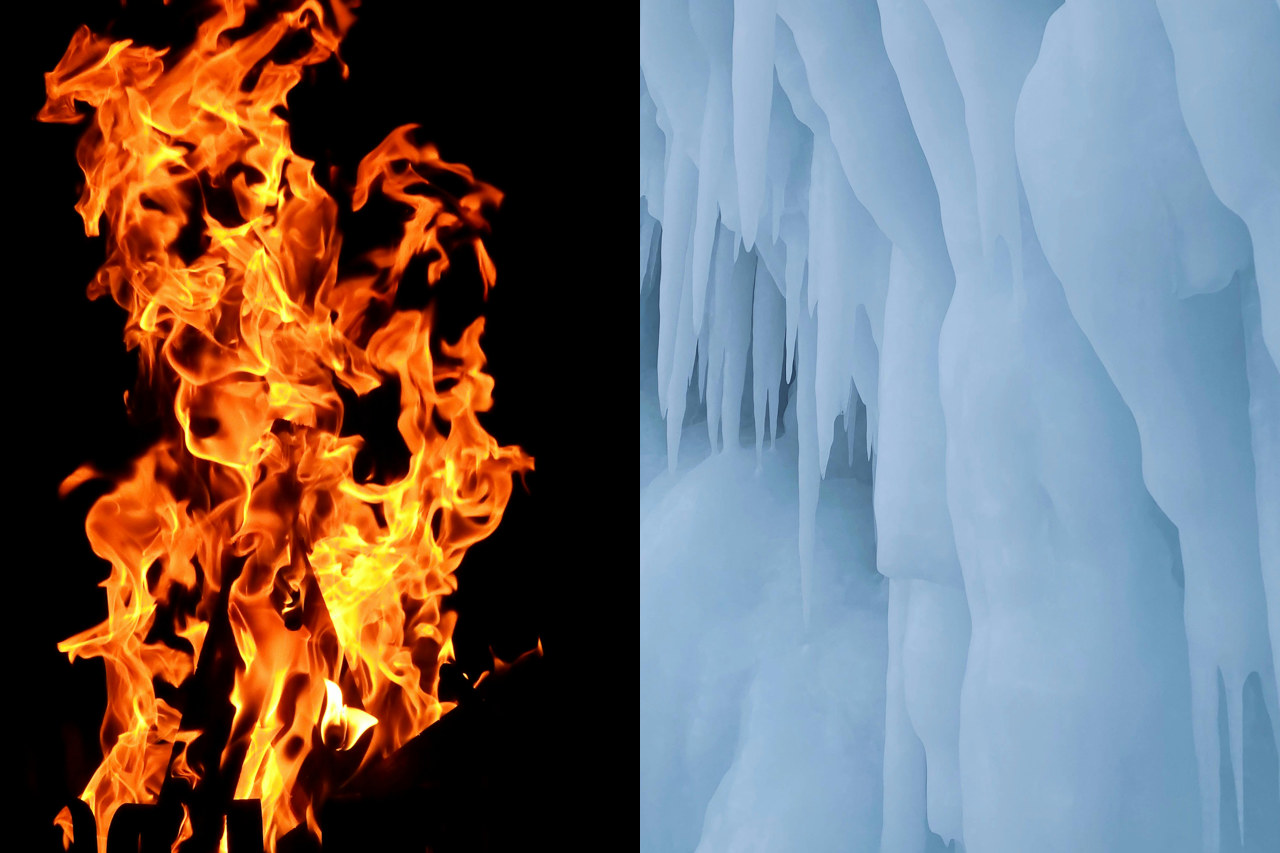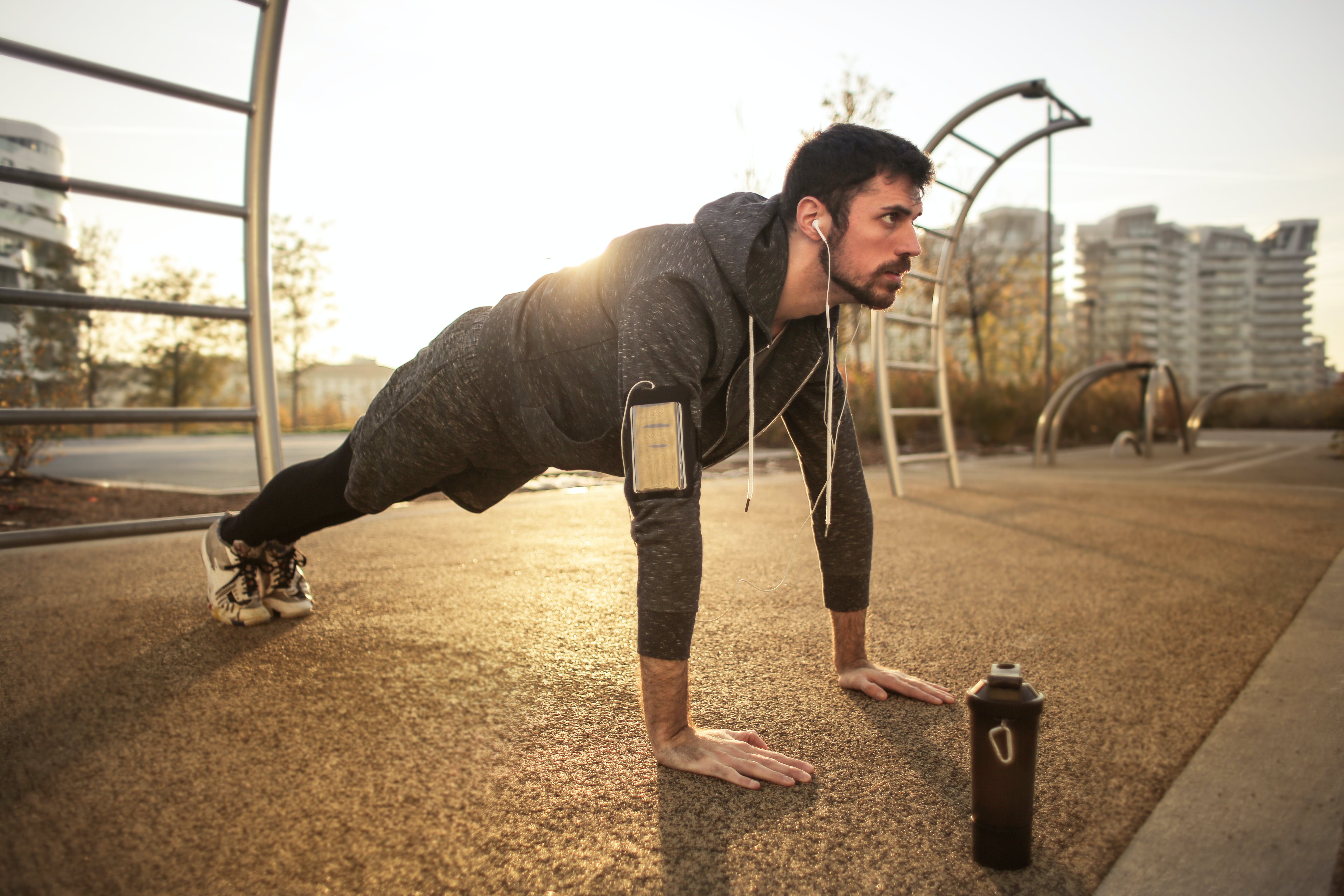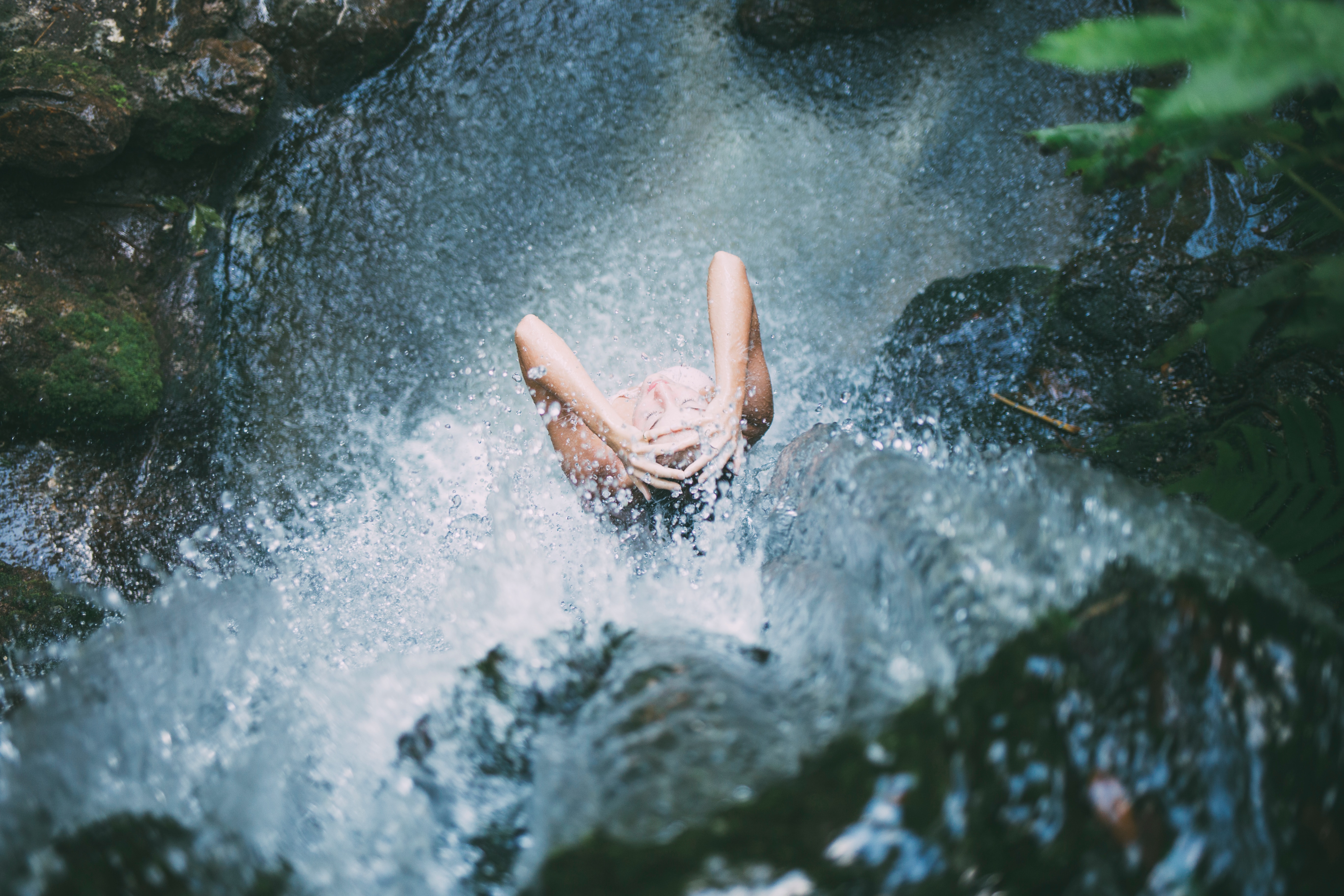- HOME
- Infrared Sauna Benefits
- Cold Plunge Benefits
The Surprising Benefits Of Infrared Sauna And Cold Plunge

The deeply penetrating sauna heat penetrating heat widens your blood vessels and gives a major circulation boost, inducing inner detoxification and through sweat. If you take a cold plunge after sauna, your vessels constrict, washing out toxins and reducing inflammatory responses.
Can you safely transition from the warmth of an infrared sauna to the invigorating chill of a cold plunge? Despite common advice to cool down gradually with a lukewarm shower post-sauna, ‘cold plungers’ and research suggest the benefits of a direct cold plunge. The intense heat of the sauna combined with a cold water plunge stimulates a healthy physiological response.
Quick tour of the blog post
- History of cold water immersion
- The cold plunge
- Cold water immersion benefits
- Beyond cold plunge
- Why athletes love cold plunges
- Cold plunge after infrared sauna
- Benefits of alternating cold and heat
- Setting up a cold plunge at home
- Your first plunge
- Questions and answers
- Remarkable cold plunges around the world
Brief history of Cold Water Immersion
Cold plunges have a rich history [1], tracing back to ancient civilizations, where immersion in cold water was used for health and rejuvenation. The earliest records, such as those from ancient Egypt around 3500 BC, indicate the use of cold treatments for many ailments.
The practice became popular in ancient Greece, where cold water was widely used for therapeutic purposes. Hippocrates, the ‘father of medicine”, advocated for the use of cold baths to “cure everything” - from chronic pain to swelling.
Today wellness enthusiasts and athletes use cold plunges to enhance recovery, boost immunity, and improve mental health.

The Cold Plunge
A cold plunge, also known as cold-water immersion (CWI) or an ice bath [2]:
- Involves a bathtub filled with ice and water, though it can also be practiced in natural bodies of water like lakes, rivers, or oceans.
- The ideal water temperature usually ranges between 50°F and 59°F.
- The duration of immersion varies, but it's commonly recommended to stay submerged between 5 and 15 minutes for optimal benefits.
Research shows that cold water immersion helps constrict blood vessels and reduce metabolic activity, minimizing swelling and tissue breakdown. Once out of the cold, the underlying tissues warm up, causing faster blood flow, which returns the byproducts of cellular breakdown to the lymphatic system for efficient recycling throughout the body.
Cold Water Immersion Benefits
Reduces Muscle Inflammation and Soreness: It constricts blood vessels, reducing swelling and soreness after intense physical activities.
Speeds Up Recovery: By decreasing metabolic activity, it minimizes tissue breakdown, and the following increase in blood flow upon warming helps remove waste products from cells faster.
Boosts Immune System: Regular exposure is believed to optimize immune response.
Enhances Mental Health: It can increase endorphins that help relieve stress and lift mood.
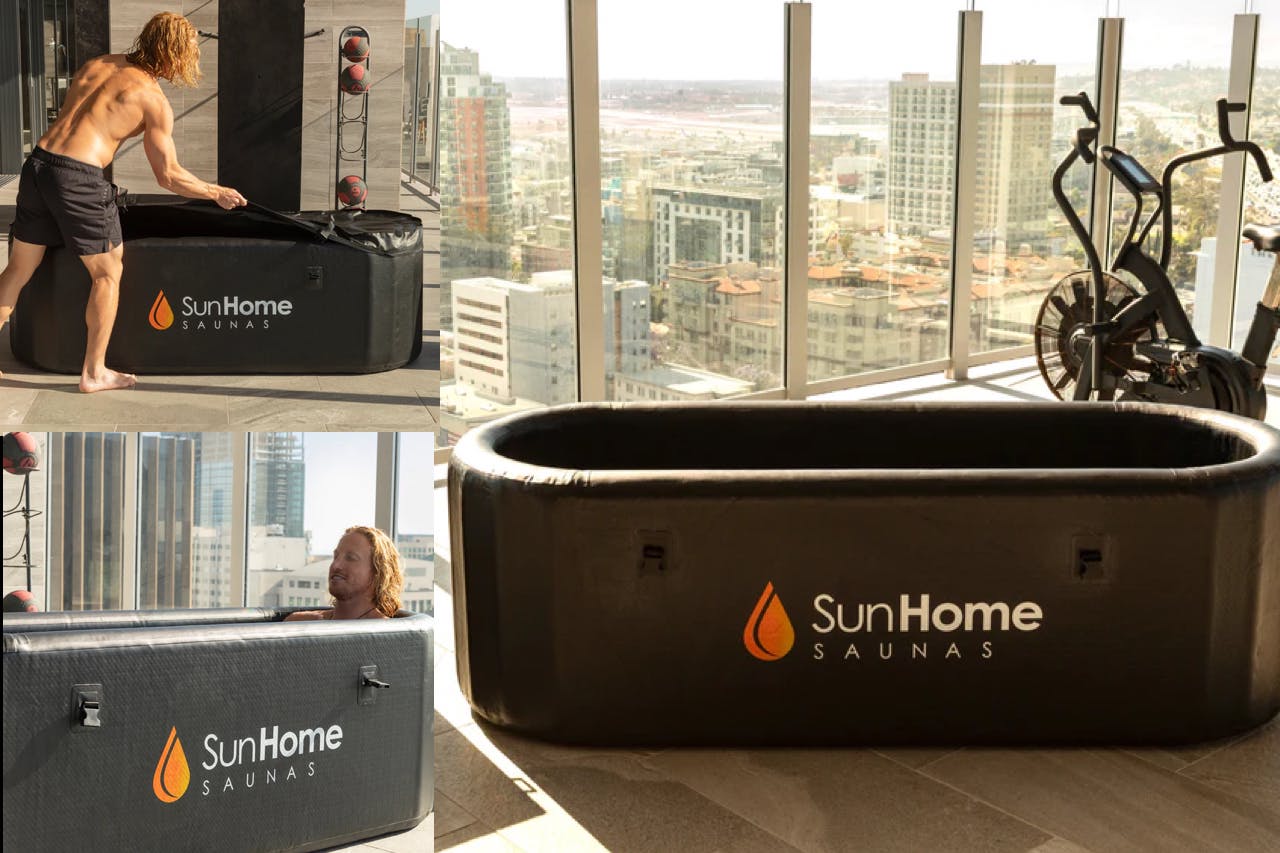
Sun Home Cold Plunge™ Portable Ice Bath With Chiller
Beyond cold plunge
Cold plunges are a well-known method for recovery and rejuvenation. But there are some other popular cold therapy treatments. Lets’ stack them up against cold plunges.
Cold Compress vs Cold Plunge
The cold pack method involves holding a cold pack or damp cloth (cooled in the freezer) against a specific part of your body (not directly against the skin). It is mainly used for targeted reduction of inflammation, pain relief and control of swelling in local injuries.
A 2015 study [3] compared the effectiveness of cold packs with cold water immersion (CWI) for ankle sprain recovery. The study found that cold packs were actually more effective over a 10-day period.
Participants using cold packs showed greater improvements in both static and dynamic balance compared to those using CWI, demonstrating the superior effectiveness of cold packs in aiding recovery from ankle sprains.
Cold packs are ideal for focused treatment, allowing you to target specific areas without exposing your whole body to cold. They’re also more accessible and affordable than a full cold plunge setup.
Cold Shower vs. Cold Plunge
Although there is no direct comparison between a cold shower and a cold dip, insights from several studies suggest that the impact of a cold shower can be just as great as those of a cold dip. The major difference is that a cold plunge immerses the entire body at once, while a cold shower targets different areas, one after another.
A cold shower does provide a practical method of cold therapy without the need for special equipment. The cold plunge requires a specific setup, such as a larger tub or pool for full-body immersion, making it less accessible for regular use.
For a detailed exploration of cold showers check out our blog post in this cold topic.
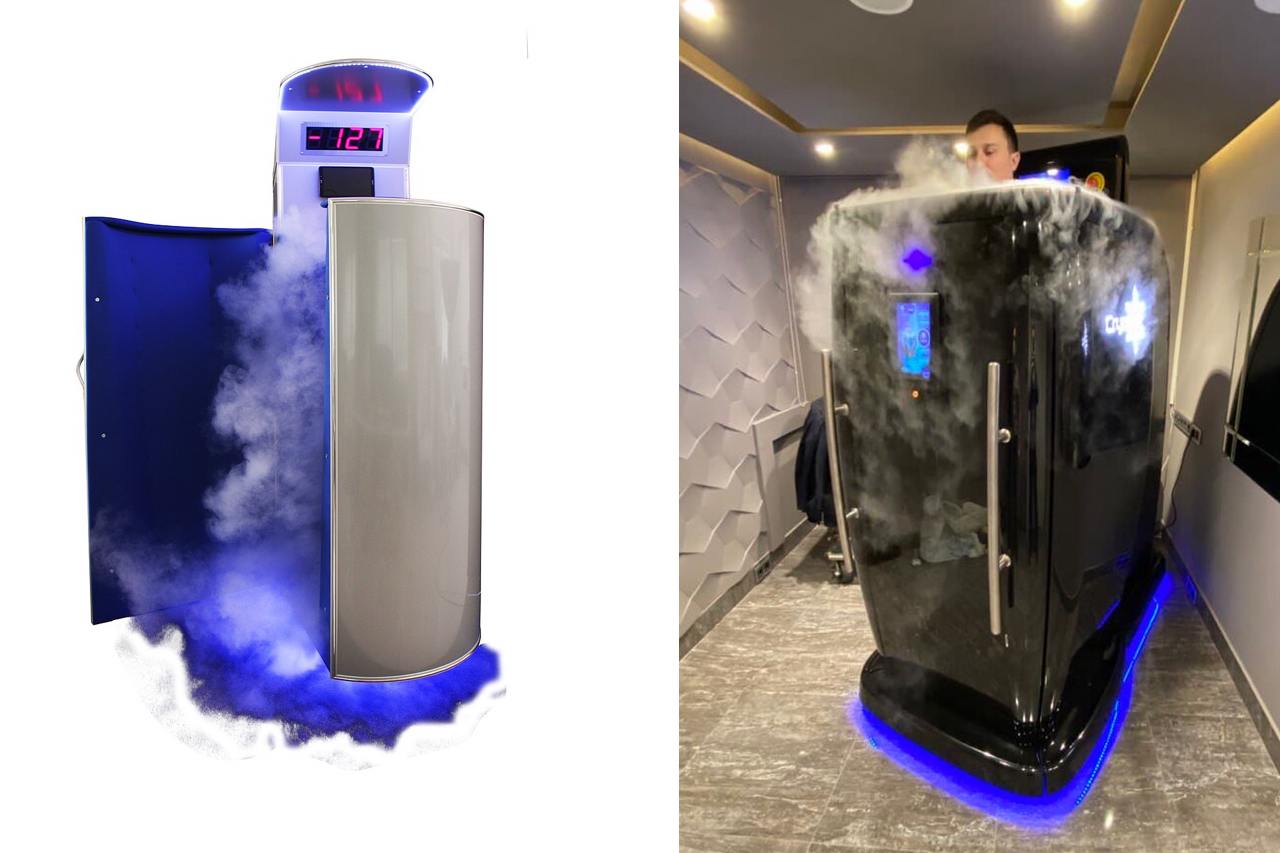
Whole Body Cryotherapy vs. Cold Plunge
Whole Body Cryotherapy (WBC) uses extremely cold air in a controlled setting to reduce inflammation and speed up recovery. WBC is available in specialized clinics only, therefore less attainable and more expensive than cold plunges, which can be set up at home for regular use.
Cold plunges offer a practical and affordable way to enjoy the benefits of cold therapy without the high costs or the need to visit a clinic.
In short, cold packs provide a quick and accessible option for immediate, localized treatment of injuries. If you have the budget and space, the cold plunge is perfect for workout recovery. It also offers a deeper, more immersive experience.
Why Athletes Love Cold Plunges
Recent findings from a 2022 systematic review [4] with meta-analysis and meta-regression provide compelling evidence on the benefits of cold-water immersion (CWI) in athletic recovery. This rigorous study synthesizes results from fifty-two individual studies. This is what they’ve found:
- Boost in Muscular Power: Following both high-intensity and eccentric exercises, CWI significantly aids in the rapid recovery of muscular power.
- Decrease in Muscle Soreness and Damage: Athletes experience reduced muscle soreness and lower levels of creatine kinase, signaling less muscle damage, after engaging in high-intensity workouts with CWI.
- Perceived Recovery Enhancement: CWI significantly improves athletes' perceived recovery, helping them feel refreshed and ready for subsequent training sessions faster.
The research clearly demonstrates why athletes favor cold plunges; CWI effectively reduces recovery times and elevates athletic performance.
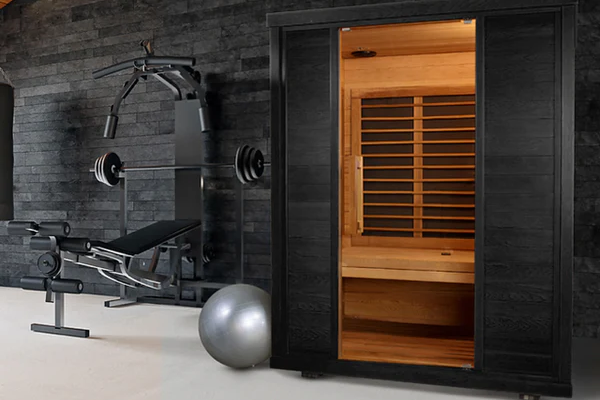
Sun Home Equinox™ 3-Person Full-Spectrum Infrared Sauna
Cold Plunge After Infrared Sauna
The practice of alternating between a hot sauna and a cold plunge, often referred to as "Nordic Cycle" or "Viking Bath," has deep roots in Scandinavian sauna traditions.
This form of hydrotherapy, also known as contrast bath therapy, leverages the health benefits of extreme temperature fluctuations to enhance wellness.
Body response to heat and cold alternation
When the body is exposed to intense heat from a sauna, blood vessels dilate, increasing blood flow and encouraging the body to shed toxins through sweat. Following this with a cold plunge causes narrowing of blood vessels, resulting in decreased inflammation and the flushing out of metabolic waste from tissues.
This rapid shift from dilation to constriction boosts circulation, forcing the body to pump blood more efficiently, optimizes the immune response, speeds up recovery times, and strengthens metabolic function. This dynamic process also stimulates the release of endorphins, creating a natural pain relief and mood boost.
Benefits of Alternating Cold and Heat
Infrared sauna and cold water immersion independently offer numerous health advantages. Both therapies decrease inflammation, relieve pain, aid in muscle recovery, enhance metabolic rate, improve mood, potential weight loss and may help you sleep better. Additionally, infrared sauna therapy supports detoxification and skin health.
Combining heat and cold therapy contributes to
Pain Management: Alternating heat and cold can help keep symptoms of osteoarthritis in check [5], control chronic back pain [6], and improve inflammatory conditions by boosting circulation and reducing inflammation.
Injury and Recovery: This therapy advances quicker recovery from injuries like sprains and strains by decreasing swelling and quicker tissue repair [7].
Muscle and Tendon Recovery: Regular sessions can alleviate symptoms of tendinitis and other tendon irritations [8].
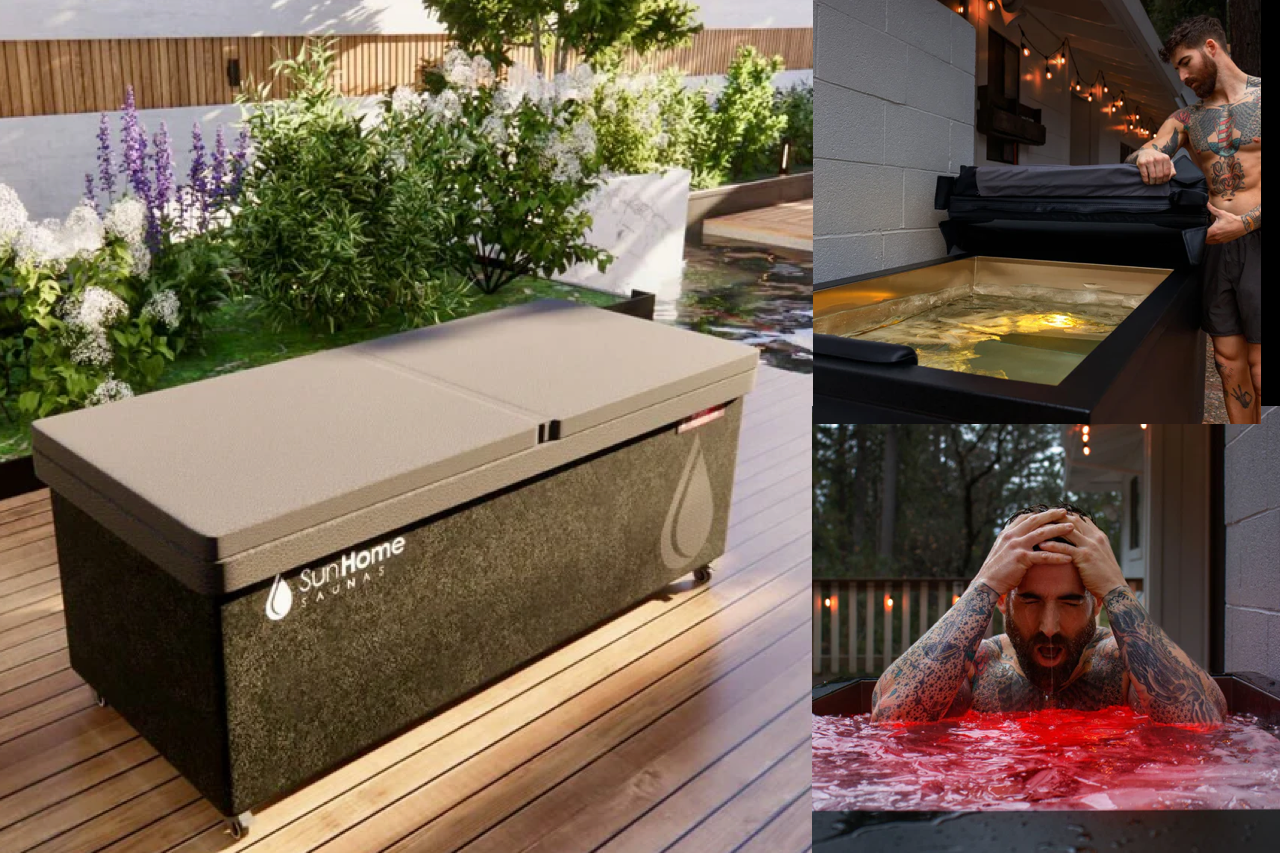
Alternating Heat and Cold Therapy for Muscle Recovery (Research Insights)
A recent 2022 study [9] examined the effects of alternating heat and cold stimulation on trapezius muscle hardness and subjective symptoms.
Participants were exposed to varying heat/cold ratios, focused on the trapezius muscle after a typing task.
Results showed that the 3:1 ratio, with more heat than cold, led to decreased muscle hardness and reduced muscle stiffness compared to other conditions. However, changes in muscle hardness didn't always correspond to changes in subjective symptoms. These findings suggest that adjusting heat/cold ratios could optimize contrast bath therapy for better muscle recovery and symptom relief.
Setting Up a Cold Plunge at Home
If you are considering a cold plunge at home, you can take a do-it-yourself approach or invest in a specialized cold plunge. Each has its benefits and considerations, depending on your budget, frequency of use, and available space. Let's go through them.
DIY Cold Plunge
Cost-Effective and Simple
With your current bathtub or a basic container, you can create a cold plunge by manually adding ice and cold water. This method requires minimal initial investment and is a practical solution for those who use the occasional cold plunge.
Drawbacks
While the DIY approach is cheaper initially, it requires regular maintenance, such as buying ice and preparing the setup each time. For frequent users, this can add up in both cost and effort, making simple installation a recurring hassle.
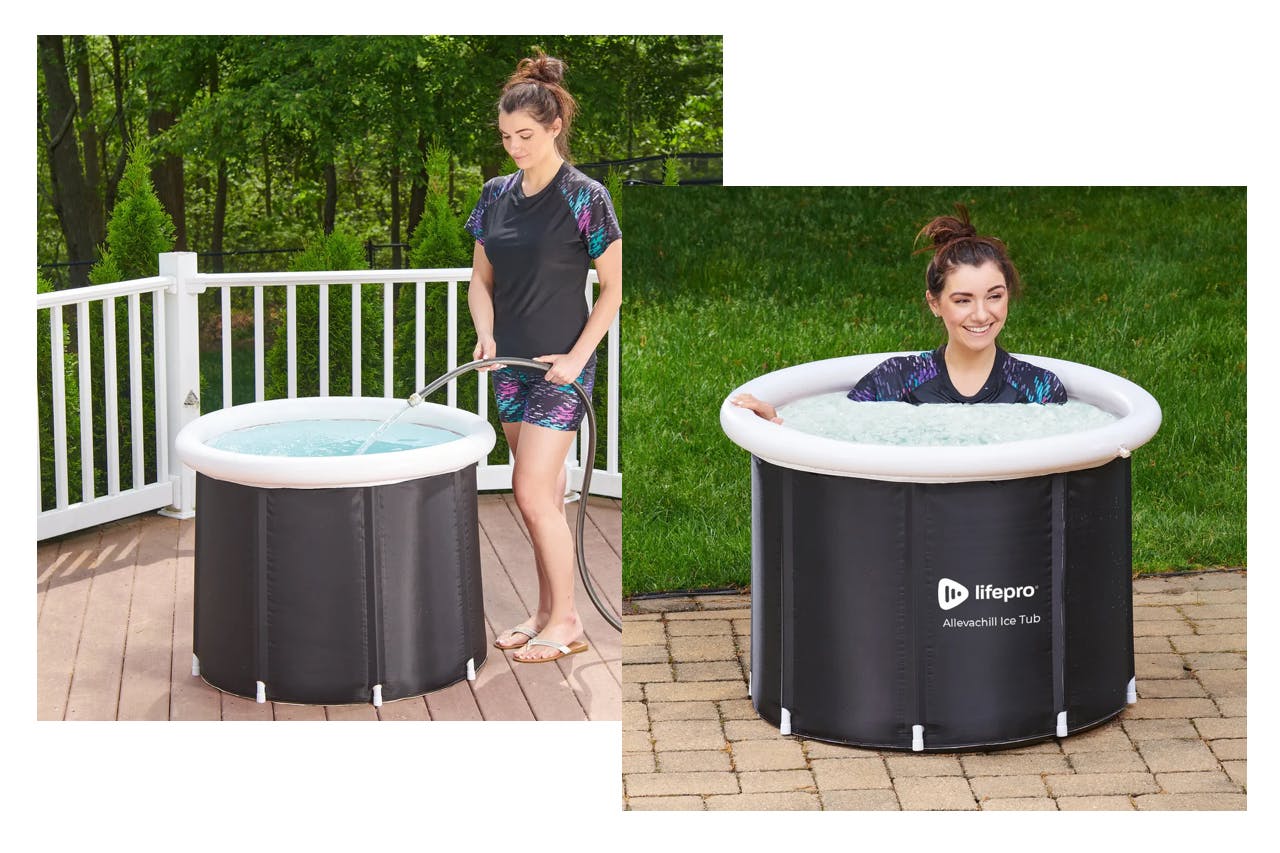
Specialized Cold Plunge Tub
Higher Initial Cost, Lower Ongoing Effort
For frequent users, it will save money over time to buy a ready-made plunge. Designed for ease of use and featuring systems that maintain water temperature effortlessly.
Benefits
These tubs often include features such as water filtration and continuous temperature control, reducing the time and energy spent on setup and maintenance. This can significantly enhance the convenience and experience of using cold therapy regularly.
Your first plunge
If you have a health condition, consult your doctor before your first cold plunge.
Here are some steps to consider as you get started:
- Start with brief sessions in the cold plunge and limit the number of cycles. As your body begins to adapt to the shock of the cold, you can gradually extend the duration and increase the frequency of your sessions.
- Deep, slow breaths help manage the shock of the cold water and promote relaxation. Focus on inhaling deeply through your nose and exhaling slowly through your mouth as you immerse yourself in the cold plunge. This regulates your heart rate and keeps you calm throughout the experience.
- Thermal therapies, whether hot or cold, can deplete your body's hydration levels quickly. Drink plenty of water before and after your cold plunge sessions to stay hydrated and to support optimal bodily functions.
- Pay close attention to how your body reacts to the cold water immersion. If you experience any negative symptoms, such as excessive shivering, numbness, or discomfort, adjust your routine accordingly, like cutting your immersion time or changing the temperature until your body can handle more.
- Regularly check your progress and any health changes. Adapt your cold plunge dips based on your ongoing experience, comfort level, and your results.
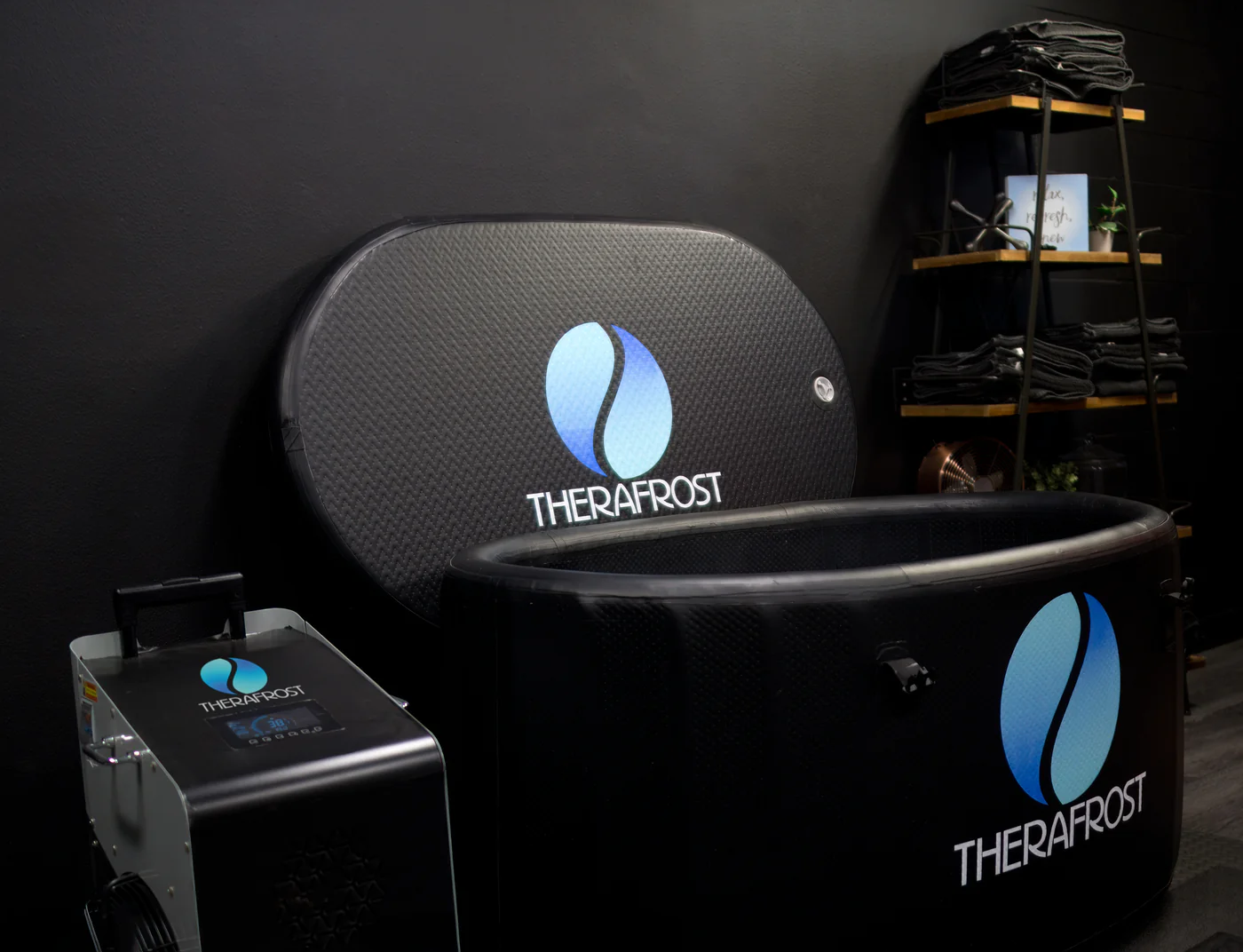
Therafrost The Ultimate Plunge
Questions and answers
How should I prepare for a session involving both sauna and ice bath?
Begin with a warm-up like light exercise or stretching for about 5 to 10 minutes to prepare your body for the temperature contrast.
How should I set the temperature for my at-home IR sauna and cold plunge?
Set your infrared sauna between 115-140°F (45-60°C) and the cold plunge as low as 37°F (3°C). Adjust based on your personal comfort and tolerance.
How long should my sauna and cold plunge sessions last?
Keep sauna sessions to 10-30 minutes (depending on your likes) and limit cold plunge sessions to no more than five minutes to avoid discomfort and maximize benefits.
What is a safe duration for a cold plunge after a sauna session?
After stepping out of a sauna, limit your cold plunge to two to five minutes if the water is extremely cold. This helps manage the shock to your system.
Can I repeat the sauna and cold plunge cycle within the same session? How often?
Yes, you can repeat the cycle of the sauna followed by a cold plunge 2 to 4 times in a session. This method is effective for enhancing recovery and can be done up to three times per week.
What should I do immediately after a cold plunge?
After a cold plunge, it's beneficial to rest for a few minutes, hydrate, and allow your body to gradually return to normal temperature.
Can I start with a cold plunge before entering the sauna?
Yes, starting with a cold plunge can effectively energize the body before a sauna session, enhancing the benefits of temperature contrast therapy.
Should I end my routine with a sauna session or a cold plunge?
Always finish with a cold plunge to prevent worsening any swelling or inflammation and to close the pores after heating.
How often can I perform sauna and cold plunge therapy?
While daily sessions are possible for experienced users, beginners should start with 2-3 sessions per week and adjust as needed.

Five Remarkable Cold Plunges Around the World
Explore these intriguing global traditions that embrace the chill:
Misogi (japan)
A spiritual purification ritual involving immersion in cold water, practiced to cleanse the mind and body. It is an ancient Shinto ritual in which individuals stand under a waterfall or immerse themselves in a natural body of cold water, chant prayers and sometimes accompanied by specific breathing techniques to deepen the spiritual experience.
Wim Hof Method
"The Iceman", Wim Hof, combines exposure to extreme cold and breathing techniques to influence the body and mind. Learn more about this method.
The Ice Bucket Challenge
This initiative became a viral sensation in 2014 and raised awareness of ALS (amyotrophic lateral sclerosis) by having participants douse themselves with ice-cold water. This social media campaign has significantly boosted fundraising for ALS research, demonstrating the power of viral challenges in driving charitable contributions and public engagement on health issues.
New Year's Dive in the Netherlands
A dip in ice-cold water, a Dutch tradition to ring in the new year. Every year, more than 65,000 people take a refreshing dive in the North Sea or in one of the country's rivers or lakes.
Winter Swimming
Winter swimming involves swimming in open-air water in winter, often at temperatures around freezing. It is considered both a physical and mental challenge and is known for its health benefits, such as better circulation and a better mood. It is especially popular in countries with a cold climate, such as Finland and Russia.
The 2024 World Winter Swimming Championships took place from March 4 to 10 in Tallinn, Estonia. This event attracted more than 1,500 participants from 40 countries, who took part in various cold water swimming races ranging from sprints to endurance events.
Ready to take the plunge? Experience the joy of alternating between the heat of the sauna and the chill of the cold plunge. It's the perfect way to fire up your wellness journey and cool down to recovery. Heat up, chill out, and enjoy the refreshing Nordic cycle of health benefits!
Saunace is supported by its audience. When you purchase through links on our website, we may earn an affiliate commission. Find more info on our affiliate policies here.

Sam Everhart
References
1. Robert Allan et al., Cold for Centuries: a Brief History of Cryotherapies to Improve Health, Injury and Post-exercise Recovery, Springer, https://www.ncbi.nlm.nih.gov/pmc/articles/PMC9012715/
2. Cleveland Clinic, Brrr! What To Know About Cold Plunges, Health Essentials, https://health.clevelandclinic.org/what-to-know-about-cold-plunges
3. Effectiveness Of Ice Pack Versus Cold Water Immersion On Static And Dynamic Balance In Ankle Sprain, International Journal of Physiotherapy and Research, https://www.researchgate.net/publication/282772938
4. Emma Moore, et al., Impact of Cold-Water Immersion Compared with Passive Recovery Following a Single Bout of Strenuous Exercise on Athletic Performance in Physically Active Participants: A Systematic Review with Meta-analysis and Meta-regression, https://pubmed.ncbi.nlm.nih.gov/35157264/
5. Emily Cronkleton, Heat or Cold Therapy for Arthritis, Healthline, https://www.healthline.com/health/arthritis/heat-or-cold-for-arthritis
6. Grant Cooper, Cold and Heat Therapy for Sciatica, Spine Health, https://www.spine-health.com/conditions/sciatica/cold-and-heat-therapy-sciatica
7. Yutan Wang et al., Heat and cold therapy reduce pain in patients with delayed onset muscle soreness: A systematic review and meta-analysis of 32 randomized controlled trials, Physical Therapy in Sport, https://www.sciencedirect.com/science/article/abs/pii/S1466853X21000055
8. Petrofsky JS. et al., Effect of heat and cold on tendon flexibility and force to flex the human knee. Med Sci Monit., https://www.ncbi.nlm.nih.gov/pmc/articles/PMC3747018/
9. Sawada T. et al., Effects of alternating heat and cold stimulation at different cooling rates using a wearable thermo device on shoulder muscle stiffness: a cross-over study. BMC Musculoskelet Disord., https://www.ncbi.nlm.nih.gov/pmc/articles/PMC9281090/
Keep the momentum going – more insightful articles are just a click away
